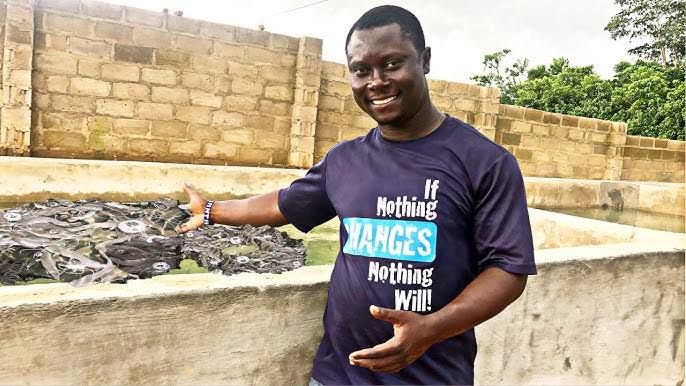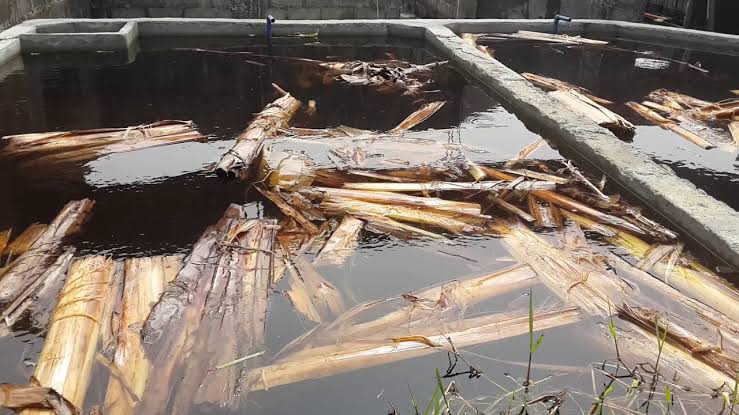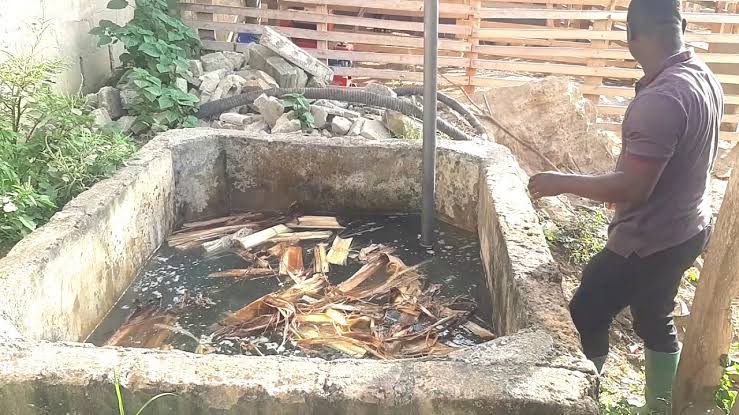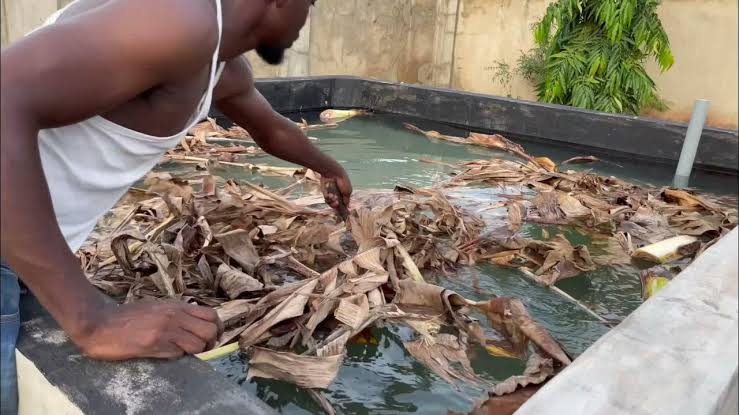Concrete ponds are a popular choice for many aquaculturists due to their durability and ease of construction. However, maintaining a balanced ecosystem within a concrete pond presents unique challenges. One of the most critical aspects is understanding how to neutralize the pond, ensuring the water conditions support aquatic life.
A primary concern in concrete ponds is the pH balance. Concrete can leach alkaline substances into the water, often leading to elevated pH levels that can be harmful to fish and other aquatic organisms.
To neutralize a concrete pond, you must first understand the natural chemistry of your water. Testing the pH levels is essential; ideally, the pH should range between 6.5 and 8.5 for most freshwater fish. If the pH level is too high, the water can become inhospitable to fish, causing stress and even mortality.
One effective way to neutralize the water is by introducing organic matter, such as leaf litter or compost. These materials can gradually acidify the water, helping to bring the pH into the desired range.
Additionally, adding natural acids, like vinegar or citric acid, in small amounts can effectively lower pH levels. It is crucial, however, to monitor these changes closely, as sudden fluctuations can be detrimental to aquatic life.
Another consideration is the alkalinity of the pond. Alkalinity refers to the capacity of water to neutralize acids. In concrete ponds, high alkalinity levels can result from the leaching of calcium carbonate from the concrete. While some alkalinity is beneficial for buffering pH fluctuations, excessively high levels can lead to problems.
Regular testing of both pH and alkalinity allows you to implement corrective measures, such as adding sulfur compounds or other appropriate substances to lower alkalinity when necessary. Understanding the differences between concrete and earthen ponds can also enhance your approach to pond management.
Concrete ponds offer specific advantages, such as longevity and reduced weed growth, but they also have inherent disadvantages. Earthen ponds, constructed from natural soil, provide a more stable ecosystem as the soil buffers pH changes better than concrete.
The natural sediment in earthen ponds supports beneficial bacteria and microorganisms, which help break down organic matter and maintain a balanced ecosystem. Conversely, concrete ponds can become susceptible to chemical imbalances due to the materials they are made from. This susceptibility emphasizes the need for careful management to ensure a healthy environment for fish.
The methods used to differentiate between concrete and earthen ponds are often visible. Earthen ponds typically have a natural, variable bottom that allows for vegetation and substrate diversity, while concrete ponds have smooth, hard surfaces that can limit habitat complexity. This difference in structure affects the overall health of the aquatic ecosystem.
In earthen ponds, the natural interaction between soil, water, and organisms helps create a self-sustaining environment, while concrete ponds often require more active management to achieve similar outcomes.
Changing the water in a concrete pond is another critical aspect of maintaining water quality. Unlike earthen ponds, where water levels can fluctuate naturally through rainfall and evaporation, concrete ponds require manual intervention to ensure proper water levels. Regular water changes can help dilute harmful substances and reset the chemical balance of the pond.
When changing the water, it’s essential to do so gradually to avoid shocking the aquatic life. Draining the pond completely is rarely advisable, as this can disrupt the ecosystem. Instead, consider partial water changes to maintain stable conditions.
Monitoring water temperature is equally important, as concrete can absorb heat from the sun, leading to increased water temperatures that can harm fish. In the summer months, this heat absorption can be particularly pronounced. Providing shade through aquatic plants or structures can help regulate water temperature, creating a more stable environment for fish.
Maintaining a concrete pond also involves regular cleaning and maintenance. Debris, such as leaves and organic matter, can accumulate over time, leading to water quality issues. Regular removal of debris and the use of filters can help maintain clear water and support a healthy aquatic environment.
Additionally, ensuring that any added chemicals, such as fertilizers or fish feed, are appropriate for a concrete setting is crucial, as some substances can react negatively with the concrete, leading to further imbalances.
While concrete ponds have their disadvantages, understanding how to neutralize them through effective pH management and regular maintenance can create a thriving habitat for fish and other aquatic organisms.
The key is to implement a comprehensive approach that considers all factors affecting water quality. By carefully monitoring pH levels, alkalinity, and the overall health of the pond, you can create an optimal environment that supports aquatic life.
Ultimately, the choice between a concrete pond and an earthen pond depends on individual goals and resources. Both types of ponds have unique characteristics that cater to different needs.
Concrete ponds may be more suitable for those seeking a low-maintenance option, while earthen ponds offer a more natural approach with inherent buffering properties. Understanding these differences allows aquaculturists to make informed decisions that align with their objectives.
Read Also: 9 Health Benefits of Calabash Nutmeg
Treatment and Maintenance Tips for Your Concrete Pond

Concrete ponds can be a beautiful and functional addition to your landscape, providing a serene habitat for fish, plants, and other aquatic life. However, they require specific maintenance practices to ensure a healthy ecosystem. Regular treatment and maintenance are vital for sustaining water quality and promoting the well-being of aquatic organisms.
To begin with, maintaining the water quality in a concrete pond is critical. Concrete can leach alkaline substances, which may lead to elevated pH levels. The ideal pH range for freshwater aquatic life generally falls between 6.5 and 8.5. Therefore, testing the water regularly for pH and other parameters, such as ammonia, nitrite, and nitrate levels, is crucial.
A water testing kit can help you monitor these levels effectively. If you notice that the pH is consistently high, you may need to take corrective action to bring it back to the optimal range.
Changing the water in a concrete pond is one of the most effective ways to manage water quality. Unlike natural ponds that benefit from rainfall and evaporation to maintain water levels, concrete ponds often require manual water changes. Regular water changes can help dilute harmful substances, such as excess nutrients and organic waste, which may build up over time.
It’s generally recommended to change about 10-20% of the water every couple of weeks, depending on the pond’s size and the number of fish present. This practice can significantly enhance water quality and overall health.
When changing the water, it’s essential to do so gradually. Sudden changes in water chemistry can shock aquatic life, leading to stress or even death. Always use a dechlorinator if you are using tap water, as chlorine and chloramines can be harmful to fish. Before adding the new water to the pond, ensure that its temperature and pH closely match those of the existing pond water.
This approach helps minimize stress on the fish and other inhabitants. In addition to regular water changes, treating the concrete pond periodically is essential for maintaining a healthy environment. One common treatment is to use beneficial bacteria to help break down organic matter and improve water clarity.
These bacteria aid in the decomposition of debris and waste, reducing the buildup of harmful substances. Many commercial products are available that introduce these beneficial microorganisms into the pond, promoting a balanced ecosystem.
Another treatment option is to incorporate aquatic plants into your concrete pond. Plants serve several purposes; they provide oxygen, absorb excess nutrients, and offer shade and shelter for fish. Introducing native aquatic plants can create a more natural environment, fostering biodiversity and improving water quality.
Ensure you select species suited to your local climate and pond conditions. Maintaining the physical structure of your concrete pond is also critical. Over time, cracks or chips may develop in the concrete, which can lead to water leaks and other issues. Inspect the pond regularly for any signs of damage and address them promptly.
Repairing cracks can be done using specialized sealants designed for underwater use. Proper maintenance of the pond’s structure helps ensure its longevity and reduces the risk of costly repairs in the future.
Regular cleaning is another crucial aspect of maintaining a concrete pond. Debris, such as fallen leaves, algae, and uneaten fish food, can accumulate in the pond, negatively affecting water quality. Use a net or skimmer to remove floating debris regularly. For submerged debris, consider using a pond vacuum or similar device to maintain cleanliness.
Regular cleaning prevents organic matter from breaking down in the water and causing issues like ammonia spikes or excessive algae growth. Algae growth is a common challenge in concrete ponds. While some algae are beneficial, excessive growth can block sunlight, hinder plant growth, and lead to oxygen depletion.
To manage algae effectively, ensure that your pond has proper aeration, which can be achieved with a fountain or an aerator. These devices help circulate the water, preventing stagnant areas where algae thrive.
Additionally, consider using ultraviolet (UV) clarifiers, which can effectively reduce algae populations by exposing them to UV light, killing the algae cells without harming fish or plants. Water temperature management is also an important consideration. Concrete can absorb heat, leading to warmer water temperatures in the summer months.
High temperatures can stress fish and promote the growth of harmful bacteria. To mitigate this, provide shaded areas in your pond using floating plants or installed structures. Shade helps regulate water temperature, creating a more comfortable environment for aquatic life.
Finally, it is essential to monitor the overall health of the fish and other inhabitants of your pond. Regular observation will help you identify any signs of stress, disease, or abnormal behavior.
Keeping a close eye on the fish will allow you to intervene quickly if problems arise. If you notice any unusual symptoms, such as erratic swimming patterns, discoloration, or lesions, consider consulting a veterinarian or an aquatic specialist to diagnose and treat any health issues.
Read Also: Ogbono Plant Nutritional Value
Steps to Neutralize Your Concrete Pond

Concrete ponds can be a stunning addition to your landscape, providing a habitat for fish, plants, and other aquatic life. However, maintaining a balanced ecosystem within a concrete pond can be challenging due to the potential for high pH levels and other chemical imbalances caused by the leaching of substances from the concrete. Neutralizing your concrete pond is essential to create a safe and healthy environment for your aquatic inhabitants.
Step 1: Test the Water Quality
The first step in neutralizing your concrete pond is to test the water quality. Purchase a water testing kit to measure the pH, ammonia, nitrite, and nitrate levels. Ideally, the pH should be between 6.5 and 8.5 for freshwater fish.
Regular testing will help you understand the existing conditions of your pond and guide your neutralization efforts. Testing should be done weekly or bi-weekly, especially after heavy rainfall or significant temperature changes, which can affect water chemistry.
Step 2: Identify the Cause of High pH Levels
High pH levels in concrete ponds are often caused by the leaching of alkaline materials from the concrete itself. This can create an unsuitable environment for fish and plants that prefer neutral to slightly acidic conditions.
It is essential to identify whether other factors, such as chemical treatments, fertilizers, or nearby landscaping, are contributing to the elevated pH. Understanding the root cause is crucial for implementing effective solutions.
Step 3: Gradually Change the Water
One of the most effective ways to neutralize a concrete pond is to change the water gradually. This process helps dilute harmful substances and reset the chemical balance. Aim to change about 10-20% of the water every couple of weeks.
For larger ponds, consider doing smaller, more frequent changes rather than a large change at once, as this can shock the system. When changing the water, ensure that the new water is dechlorinated and closely matches the existing temperature and pH to avoid shocking the aquatic life.
Step 4: Introduce Organic Matter
Introducing organic matter, such as leaf litter, compost, or natural aquatic plants, can help lower pH levels over time. Organic matter decomposes and releases acids, which can gradually acidify the water. Native plants not only provide habitat but also contribute to nutrient cycling within the pond.
Ensure that the materials you introduce are free from chemicals and pesticides to prevent introducing toxins into the pond. Additionally, plants like cattails, water lilies, and duckweed can help absorb excess nutrients that might be raising the pH.
Step 5: Add Natural Acids
If the pH levels remain high despite gradual water changes and organic matter introduction, consider adding natural acids like vinegar or citric acid. These substances can help lower pH levels without introducing harsh chemicals into the environment. Begin by adding small amounts and test the pH regularly to monitor the changes.
This approach allows you to adjust the acidity gradually without shocking the pond’s ecosystem. When using natural acids, ensure they are diluted and added in small increments to prevent drastic changes.
Step 6: Use pH Reducers
If the previous steps do not yield the desired results, consider using commercially available pH reducers specifically designed for pond use. These products often contain safe, biodegradable ingredients that can effectively lower pH levels.
Follow the manufacturer’s instructions carefully, as these products can have a rapid impact on water chemistry. Always monitor the pH closely after adding any chemicals to avoid drastic fluctuations, which can be harmful to fish and plants.
Step 7: Improve Alkalinity Management
Managing alkalinity is essential for maintaining stable pH levels in your pond. Alkalinity acts as a buffer, helping to prevent sudden changes in pH. Regularly test the alkalinity and ensure it stays within the ideal range of 80-120 ppm.
If alkalinity is excessively high, consider adding sulfur compounds or other appropriate substances to lower it gradually. Conversely, if alkalinity is too low, you can use limestone or baking soda to raise it. Proper alkalinity management supports a stable environment for aquatic life.
Step 8: Aerate the Water
Aeration plays a significant role in maintaining a healthy pond environment. Installing a fountain or aerator helps increase oxygen levels and promotes water circulation, which can improve overall water quality.
Well-aerated water supports beneficial bacteria, which aid in breaking down organic matter and maintaining balance. Aeration also helps control algae growth by promoting competition for nutrients between algae and aquatic plants.
Step 9: Monitor Water Temperature
Concrete ponds can absorb heat from the sun, leading to increased water temperatures. Elevated temperatures can stress fish and promote harmful bacterial growth. Monitor water temperature regularly, especially during hot weather.
Providing shade through floating plants or structures can help regulate water temperature and create a more stable environment for fish. Consider using shade cloths or natural overhangs to protect the pond from direct sunlight during the hottest parts of the day.
Step 10: Maintain Regular Water Quality Testing
After implementing the initial steps to neutralize your concrete pond, it is crucial to maintain a routine of water quality testing. Regularly check pH, ammonia, nitrite, nitrate levels, and alkalinity to ensure that the pond remains within acceptable limits.
Consistent monitoring allows you to detect any changes early and take corrective action as needed. If you notice any significant changes, it may be necessary to reassess your maintenance strategies and make adjustments.
Step 11: Introduce Beneficial Bacteria
Adding beneficial bacteria to your concrete pond can help improve water quality by breaking down organic waste and reducing harmful substances. These bacteria can be introduced through commercial products specifically designed for ponds.
Follow the product instructions for the best results, and continue to monitor water quality to gauge the effectiveness of this treatment. Introducing these microorganisms can help enhance the natural filtration process and improve the overall health of your pond.
Step 12: Remove Debris Regularly
Regular cleaning is essential for maintaining water quality in your concrete pond. Remove floating debris, such as leaves and uneaten fish food, using a net or skimmer. For submerged debris, consider using a pond vacuum or similar device. Preventing organic matter from accumulating helps avoid ammonia spikes and excessive algae growth. Additionally, regular cleaning helps prevent the buildup of nutrients that can lead to water quality issues.
Step 13: Manage Algae Growth
Algae can be a common issue in concrete ponds, particularly in warm weather. While some algae is beneficial, excessive growth can block sunlight and hinder aquatic plants. Implementing good maintenance practices, such as regular cleaning and water changes, can help control algae.
Additionally, consider using ultraviolet (UV) clarifiers to reduce algae populations effectively. These devices help maintain water clarity and quality without harming fish or beneficial plants.
Step 14: Observe Aquatic Life
Monitoring the health of fish and other inhabitants in your pond is crucial. Regular observation will help you identify any signs of stress or disease early. If you notice unusual behavior, such as erratic swimming or discoloration, consult an aquatic specialist for guidance on treatment. Maintaining a close watch on your pond’s ecosystem will help you respond quickly to any changes that could impact its health.
Frequently Asked Questions on how to neutralize concrete pond

1. What causes high pH levels in a concrete pond?
High pH levels in concrete ponds are often caused by the leaching of alkaline materials from the concrete itself. Additionally, factors such as fertilizers, chemical treatments, and runoff from nearby areas can also contribute to elevated pH levels.
2. How can I test the water quality in my concrete pond?
You can test the water quality using a water testing kit available at pet stores or garden centers. These kits typically measure pH, ammonia, nitrite, and nitrate levels. Regular testing helps you monitor the pond’s conditions and detect any imbalances early.
3. What are some natural ways to lower the pH in my pond?
Natural methods to lower pH include introducing organic matter like leaf litter or compost, adding natural acids such as vinegar or citric acid, and ensuring regular water changes to dilute high pH levels.
4. How often should I change the water in my concrete pond?
It is recommended to change about 10-20% of the water every couple of weeks. This gradual approach helps dilute harmful substances without shocking the pond’s ecosystem. For larger ponds, consider smaller, more frequent changes.
5. Can I use commercial pH reducers in my pond?
Yes, commercial pH reducers designed for ponds can be effective in lowering pH levels. However, it’s essential to follow the manufacturer’s instructions carefully and monitor water quality closely after application to avoid drastic changes.
6. What role do beneficial bacteria play in neutralizing a concrete pond?Beneficial bacteria help improve water quality by breaking down organic waste and reducing harmful substances. Introducing these microorganisms can enhance the natural filtration process and support a healthier pond ecosystem.
7. How can I manage algae growth in my concrete pond?
To manage algae growth, maintain good water quality through regular cleaning and water changes. Installing a UV clarifier can also help control excessive algae while preserving the health of fish and plants in the pond.
Read Also: Healthy Snacks For Kids
Do you have any questions, suggestions, or contributions? If so, please feel free to use the comment box below to share your thoughts. We also encourage you to kindly share this information with others who might benefit from it. Since we can’t reach everyone at once, we truly appreciate your help in spreading the word. Thank you so much for your support and for sharing!

